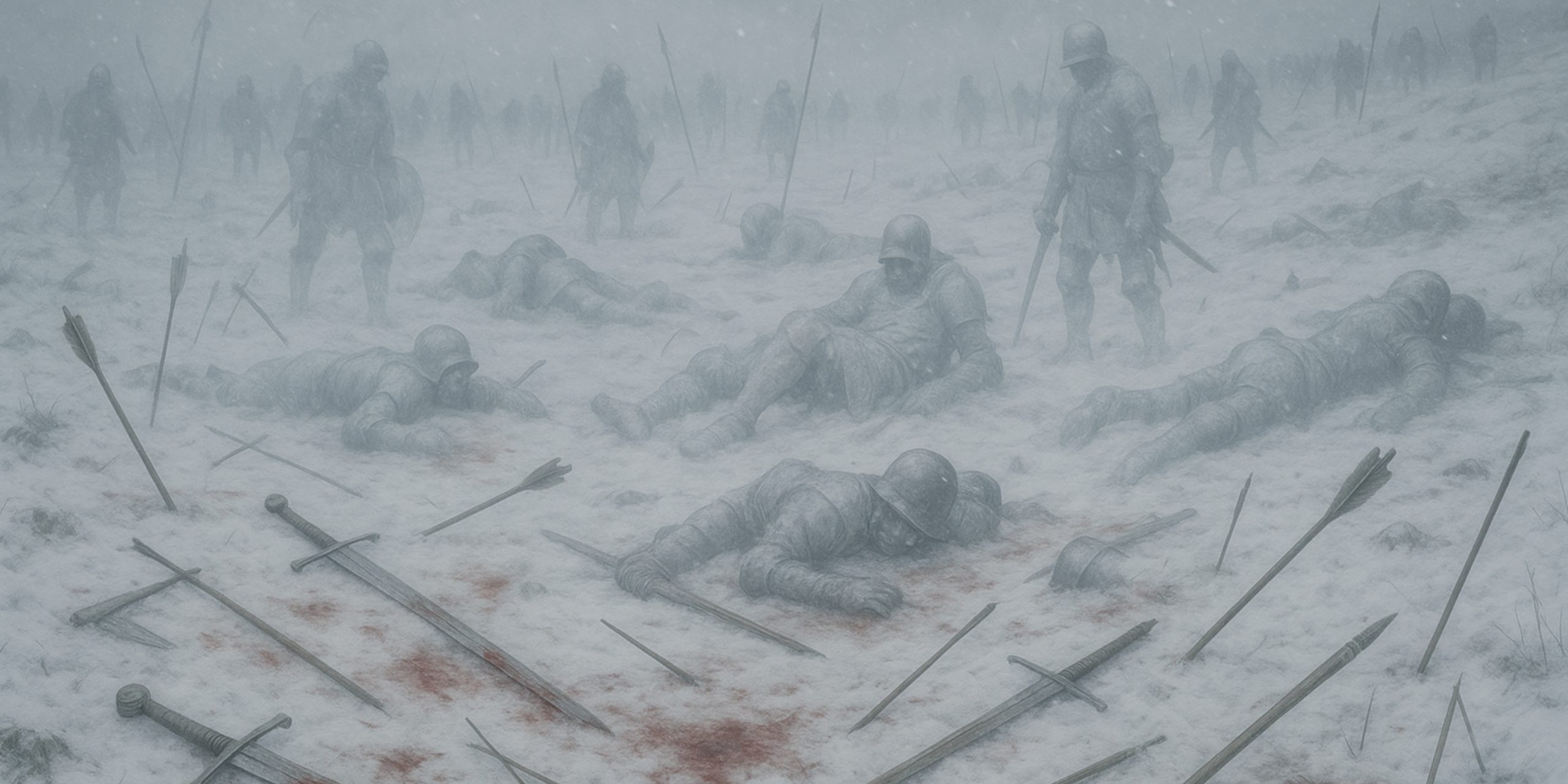
Battlefield archaeology has become one of the most revelatory fields in modern historical research. By studying the physical remnants of past conflicts, archaeologists can challenge long-held narratives, confirm historical records, and shed light on the lived experience of warfare. The following ten discoveries represent significant moments where the ground quite literally spoke, altering how we understand war, society, and memory.
1. The Towton Battlefield Mass Grave (1461, England)
The unearthing of a mass grave near Towton in North Yorkshire in 1996 brought a brutal clarity to England’s bloodiest battle. Over 40 skeletons showed horrific injuries, with sword and poleaxe wounds to the skull, suggesting a violent rout and execution of the defeated. Analysis revealed the combatants were largely young men in their prime, many with healed battle injuries from earlier campaigns, painting a stark picture of England’s dynastic civil wars.
2. Teutoburg Forest Weaponry (9 AD, Germany)
Excavations at Kalkriese, the likely site of the Roman defeat by Germanic tribes under Arminius, uncovered Roman coins, slingshot bullets, chainmail, and hobnails. The scatter of equipment and human remains confirms the ambush was sustained over a long, narrow front, contradicting older ideas of a singular pitched battle. This evidence reshaped how historians understand Rome’s frontier struggles.
3. The Battlefield of Visby (1361, Sweden)
Unique for its preserved battlefield burials, Visby offered over 1,100 skeletons still clad in armour. Many were local militia cut down by professional Danish forces. The graves held mail hauberks, kettle hats, and polearms, including several rare Scandinavian variants. The sheer density of trauma and the context of buried men still in gear underscored the swift, devastating nature of the assault.
4. Harold’s Arrow Injury Re-examined (1066, Hastings, England)
The discovery of a skeleton with a foreign iron arrowhead embedded near the orbital socket stirred debate about Harold Godwinson’s death. Although not definitive proof, it prompted new discussion about the reliability of the Bayeux Tapestry and the potential myth-making in Norman chronicles. It also focused attention on the precise location of the final Saxon defence line.
5. The Clontarf Battlefield Landscape Survey (1014, Ireland)
Geophysical surveys and small-scale digs at Clontarf have challenged the traditional nationalist framing of the battle. Rather than a clear-cut Irish versus Viking conflict, evidence pointed to a complex coalition of Norse-Gaels and Irish factions. The finds, including weapon fragments and boat rivets, highlighted the maritime nature of the forces involved and the fluidity of allegiance in early medieval Ireland.
6. Waterloo’s Forgotten Remains (1815, Belgium)
Despite being one of the most studied battles in European history, recent finds at Waterloo have surprised researchers. Excavations revealed amputated limbs from a field hospital, a French cuirassier’s skeleton pierced by a sabre, and caches of musket balls. These remains confront the mythologised version of the battle and offer a sobering glimpse into the chaos beyond the main fighting lines.
7. The Alésia Siege Lines (52 BC, France)
Julius Caesar’s siege of Vercingetorix was confirmed by archaeological work around Mont-Auxois, where double lines of ditches, palisades, and caltrops were uncovered. Roman fortifications surrounded the Gauls and protected from outside relief forces. The scale and engineering precision substantiated Caesar’s account, reinforcing the logistical prowess of the Roman military machine.
8. Jacobite Skirmish Finds at Culloden (1746, Scotland)
Metal detectorists and archaeologists working at Culloden have mapped musket ball trajectories, locating the true Jacobite right flank and Highlander advance paths. The discovery of grapeshot, broken broadswords, and shattered targes (shields) helps reconstruct the ferocity of the final Highland charge. Soil chemistry changes also revealed campfires and tent areas, adding detail to troop positions before battle.
9. The Skeletons of Himera (480 and 409 BC, Sicily)
Two separate mass graves in Himera revealed casualties from both the Greek victory over Carthage and the later Carthaginian revenge attack. Osteological analysis distinguished soldiers from different regions based on diet and isotope data. This proved the Greek army was more cosmopolitan than expected, featuring mercenaries from across the Mediterranean.
10. Bohemian Ditch Systems at the Battle of White Mountain (1620, Czech Republic)
Recent LIDAR scanning and excavation exposed elaborate ditch and bastion systems used by the Catholic League. These earthworks explain how Imperial forces absorbed the Protestant assault. The evidence showed that engineering and terrain played a far greater role in the Catholic victory than previously acknowledged, reshaping views of early modern warfare tactics.
These discoveries not only correct historical inaccuracies but breathe life into battles often flattened by time. They remind us that wars were fought by individuals whose weapons, wounds, and bones still speak, centuries later. Battlefield archaeology, by combining forensic precision with historical interpretation, continues to unearth truths that documents alone cannot provide.



